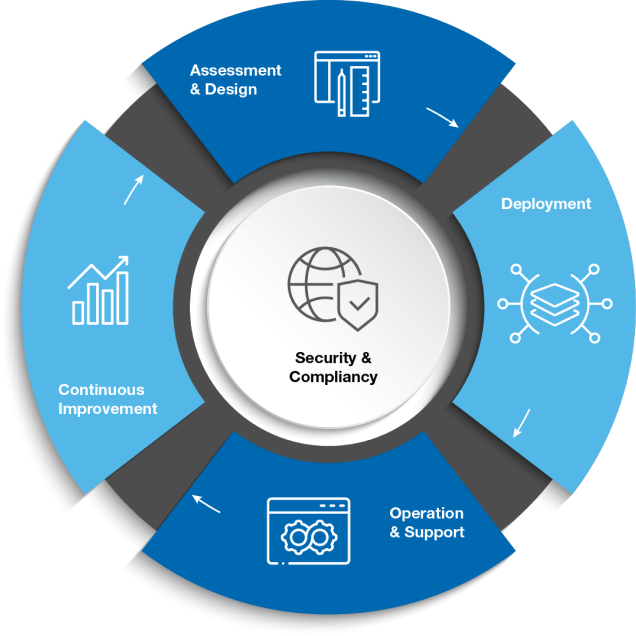Understanding Your Current Infrastructure
Before you even think about migrating, you need a solid understanding of your existing on-premises environment. This means documenting everything: servers, applications, databases, networks, and dependencies. Inventory software can help automate this process, but even a spreadsheet with detailed information is a huge step in the right direction. The more thorough you are here, the smoother your migration will be. Don’t forget to consider factors like server uptime requirements, data security, and compliance regulations. All these influence your migration strategy.
Choosing the Right Azure Services
Azure offers a vast array of services, and picking the right ones is crucial for a successful migration. This depends heavily on your existing infrastructure and applications. For example, virtual machines (VMs) are a popular choice for lifting and shifting existing workloads, while Azure App Service offers a more managed approach for applications. Consider factors such as cost, scalability, and managed services when making your decision. Don’t hesitate to leverage Azure’s many resources and documentation, including their migration planning tools, to guide you.

Assessing Migration Strategies
There’s no one-size-fits-all approach to Azure migration. Several strategies exist, each with its own pros and cons. “Lift and shift” involves moving your existing workloads to Azure VMs with minimal changes. “Replatform” allows for some optimization and modernization during the migration process. “Refactor” involves rewriting or redesigning applications to take advantage of cloud-native services. Finally, “rehost” involves moving applications to a different platform without substantial code changes. Carefully evaluate your applications and choose the strategy that best balances cost, effort, and business value.
Planning Your Migration: A Step-by-Step Approach
Once you’ve chosen your strategy and Azure services, create a detailed migration plan. This should include a timeline, resource allocation, testing procedures, and rollback plans. Break down the migration into smaller, manageable phases to minimize disruption. Prioritize workloads based on business criticality and complexity. Regularly review and update your plan as you progress, adapting to any unforeseen challenges.
Leveraging Azure Migration Tools
Azure provides several tools to simplify the migration process. Azure Migrate is a key tool for assessing your on-premises environment and planning your migration. It can discover your servers and applications, analyze their compatibility with Azure, and even help estimate the costs involved. Azure Site Recovery provides disaster recovery and replication capabilities, allowing you to seamlessly move workloads to Azure with minimal downtime. Don’t be afraid to explore other tools and services offered by Azure to streamline your migration.
Testing and Validation: Crucial for Success
Thorough testing is paramount to ensure a smooth transition. Before moving your entire environment, migrate a small subset of your workloads to Azure as a pilot project. This allows you to identify and resolve potential issues before impacting your entire production environment. Testing should cover various aspects, including performance, security, and functionality. Don’t skimp on this critical step; it’s far easier (and cheaper!) to fix problems in a test environment than in production.
Post-Migration Optimization
Once your migration is complete, the work isn’t over. Continuously monitor your Azure environment to ensure optimal performance and cost efficiency. Take advantage of Azure’s built-in monitoring and management tools to identify areas for improvement. This might involve optimizing resource allocation, scaling resources based on demand, or upgrading to newer Azure services as they become available. Regular review and optimization are key to maximizing the benefits of your cloud migration.
Security Considerations Throughout the Process
Security should be a top priority at every stage of your Azure migration. Ensure you understand and implement Azure’s security features, including network security groups, access control lists, and encryption. Regularly review your security posture and make adjustments as needed. Don’t forget to consider compliance regulations and industry best practices throughout the process. A secure cloud migration is a successful cloud migration.
Cost Optimization Strategies
Migrating to the cloud doesn’t automatically mean lower costs. Careful planning and optimization are essential to control expenses. Use Azure’s pricing calculator to estimate costs before migrating. Consider using reserved instances or Azure Hybrid Benefit to reduce expenses. Regularly review and optimize your Azure resource consumption to avoid unnecessary costs. The cloud’s flexibility should allow you to pay only for what you use and scale resources effectively based on your needs.
Seeking Expert Assistance When Needed
While many organizations successfully manage Azure migrations independently, seeking professional help is often beneficial. Azure experts can provide guidance, support, and best practices throughout the migration process, reducing risks and ensuring a smooth transition. They can help you optimize your migration strategy, choose the right services, and minimize disruption. Consider engaging experts for complex migrations or if you lack internal expertise. Please click here to learn more about azure cloud migration services.

